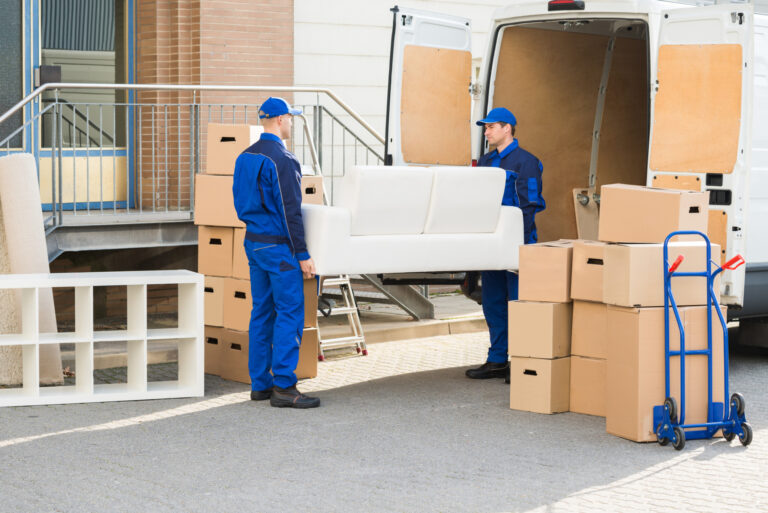
Packing is often one of the most stressful and time-consuming parts of moving. You have to figure out what goes where, how to properly pack your belongings to avoid damage, and make sure everything fits into your new home. Hiring reputable movers is also an added task.
If you’re feeling overwhelmed by the packing process, don’t worry! We’ve got you covered with how to properly pack for a move.
Properly packing for a move is essential to ensure the safety of your belongings and make the unpacking process easier. Here are some steps to help you pack efficiently and effectively:
- Gather packing supplies: Before you start packing, gather all the necessary packing supplies. This includes sturdy cardboard boxes in various sizes, packing tape, bubble wrap, packing paper, markers for labeling, and protective covers or blankets for fragile items and furniture.
- Declutter and organize: Take the opportunity to declutter your belongings before packing. Sort items into categories such as keep, donate, sell, or discard. This will help you reduce the number of items to pack and make the moving process more streamlined.
- Start early and create a packing timeline: Begin packing well in advance to avoid last-minute stress. Create a packing timeline or schedule to ensure you allocate enough time for each room or category of items. Start with non-essential and seasonal items and gradually move towards everyday essentials.
- Pack room by room: Focus on one room at a time to maintain organization. Start with rooms that are used less frequently, such as guest rooms or storage areas. Clearly label each box with the room it belongs to and a brief description of its contents. This will make unpacking easier and help movers know where to place the boxes in your new home. Packing one room at a time will help you stay organized and prevent you from getting overwhelmed. Start with the room that is least used and work your way to the most used room.
- Protect fragile items: Wrap fragile items individually with packing paper or bubble wrap. Fill any empty spaces in boxes with packing material to prevent movement. Place fragile items towards the top of the boxes and label them as “fragile” to ensure they are handled with care. If you have heavy items, use a dolly to help move them. This will prevent you from injuring yourself and will make the move easier.
- Use appropriate box sizes: Use smaller boxes for heavier items like books and larger boxes for lighter items like bedding or pillows. This helps maintain the integrity of the boxes and prevents overloading, making them easier to carry and stack.
- Disassemble furniture: If possible, disassemble larger furniture items before packing. Keep screws, bolts, and other small parts in clearly labeled plastic bags and tape them securely to the furniture or place them in a box labeled “hardware.”If you have time, disassemble your furniture before the move. This will make it easier to transport and will prevent damage. Disassembling your furniture may seem like a daunting task, but it’s actually fairly simple – and it’s a great way to save space when packing for a move. Most Adelaide movers will be happy to do it for you, but it’s always a good idea to give them a heads up so they can bring the necessary tools. If you’re doing it yourself, all you need is a screwdriver and an Allen key. Simply unscrew any screws or bolts holding the furniture together, and then gently pull it apart. Once you’ve disassembled your furniture, packing is a breeze – just make sure to label all of the pieces so you know where they go when it’s time to reassemble!
- Pack an essentials box: Prepare a box of essential items that you’ll need immediately upon arrival at your new home. This can include toiletries, a change of clothes, medications, important documents, chargers, and basic kitchen supplies. Keep this box easily accessible during the move.
- Label and inventory: Clearly label each box with its contents and the room it belongs to. Consider creating an inventory list with box numbers or labels and a brief description of the contents. This will help you keep track of your belongings and ensure nothing gets lost. If you’re trying to save money on packing materials, use what you have around the house. Blankets, towels, and clothes can be used to wrap delicate items.
- Reinforce and seal boxes: Securely tape all boxes to prevent them from opening during transit. Reinforce the bottoms of boxes with extra layers of tape for added strength, especially for heavier items. Seal the tops of the boxes completely to protect the contents.
Remember to take care when lifting and carrying boxes, using proper lifting techniques to avoid injury. By following these packing tips, you can ensure that your belongings are well-protected during the move and make the unpacking process smoother and more organized.






